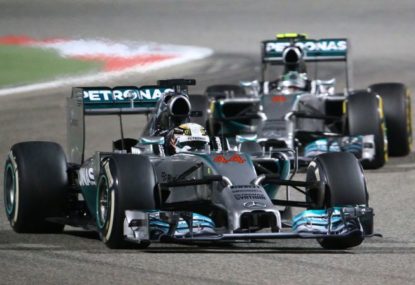Fernando Alonso's future is secure, now it's Lance Stroll's time to deliver for Aston Martin
It’s time that serious questions are asked of his Lance Stroll and his future in the team.

The McLaren-Mercedes association has only nine races to run, prior to Honda’s highly anticipated return to Formula One next season.
Twenty seasons is a long time for two organisations to be in collaboration. They have been together so long that the two names have become synonymous with one another.
Yet, for the potential when the two joined forces in 1995, the relationship’s finest hour is destined to be confined to its relative infancy, when Mika Häkkinen swept 1998.
The quasi-Silver Arrows’ early season domination was such that Häkkinen and teammate David Coulthard lapped every competitor at the Australian Grand Pri – a race infamous for bringing team-orders into the spotlight, en-route the first of five one-two routs throughout the campaign.
Häkkinen scraped his second title in 1999, but Ferrari denied them the satisfaction of the constructors’ crown. This would become the Prancing Horse’s exclusive domain for six seasons.
As Ferrari and Michael Schumacher took all before them in the early twenty-first century, McLaren and Mercedes become synonymous with another variety of winning – winning the battle to be the most unreliable.
Mercedes engine failures were a common sight, belying the Adrian Newey-designed challengers. His creations to this day with Red Bull are notorious for sparing no space, perhaps this was part of the problem.
The ambitious MP4-18 intended for 2003 is testament to this, it never appeared at a race weekend.
Kimi Räikkönen had a near miss that season, coming within two points of ending the Schumacher reign, despite a solitary victory and a car that wasn’t anywhere near the class of the field.
Two years later, the Finn – arguably at his peak, won seven races courtesy of some peerless displays, and the team ten for the season, yet despite boasting the fastest car on the grid, unreliability cost them both titles to Fernando Alonso and Renault.
When Alonso arrived in 2007 as reigning dual World Champion, joined by a rookie teammate named Lewis Hamilton, there were great expectations of a revival.
These hopes were realised, but what nobody counted was Hamilton matching and regularly outperforming the Spaniard.
What shaped as a tour de force mid-season, with both drivers’ and team comfortably heading the standings, it escalated into the unforgettable ‘Spygate’ scandal.
Alonso, jealous of being overshadowed, threatened to reveal incriminating details from which point the campaign went into freefall.
McLaren were fined $100 million, excluded from the constructors’ standings, and Alonso’s relationship with the team was non-existent.
Hamilton led the standings going to the finale, but his slide into retirement at China, coupled with a costly mistake at Brazil, ensured defeat from the jaws of victory. Victory went to Räikkönen of all people, while Ferrari collected another constructors’ title.
Alonso would retreat to Renault, leaving Hamilton as the main man.
Twelve months later, the Briton made amends with his memorable pass on Timo Glock at turn 13 on the final lap to deny Felipe Massa a popular title on home soil, giving McLaren their first in nine seasons.
And their last in the Mercedes era.
The German marque announced their return to the sport as a manufacturer at the end of 2009, absorbing the fairytale Brawn GP, and scaling back their ties to the Woking squad.
Despite the effective relegation to customer status, the partnership would enjoy further victories. Hamilton was unlucky to be plagued by chronic unreliability in 2012 when it looked as though he could make a breakthrough, but by the end of the season, he was bound for the factory team.
And so in May 2013, with McLaren enduring the worst campaign of their association, it was announced they would be re-uniting with Honda from 2015. It signalled the end of one of the sport’s most enduring relationships, potentially on par with the McLaren-Marlboro association.
There are no outward signs that Jenson Button or Kevin Magnussen can give the combination a final hurrah, with suggestions that Mercedes aren’t providing the team with an optimum package as Honda looms in the background.
Three drivers and a solitary constructors title aren’t a lot to show, considering how bright the outlook was in the early days.
Even for an operation which emphasises race victories as the primary measure of success, these have been few and far between for a large portion of the tenure.
When the curtain comes down on the relationship at Brazil, those involved over the years will look back fondly, but the overwhelming sentiment will be one comprising ‘what if.’